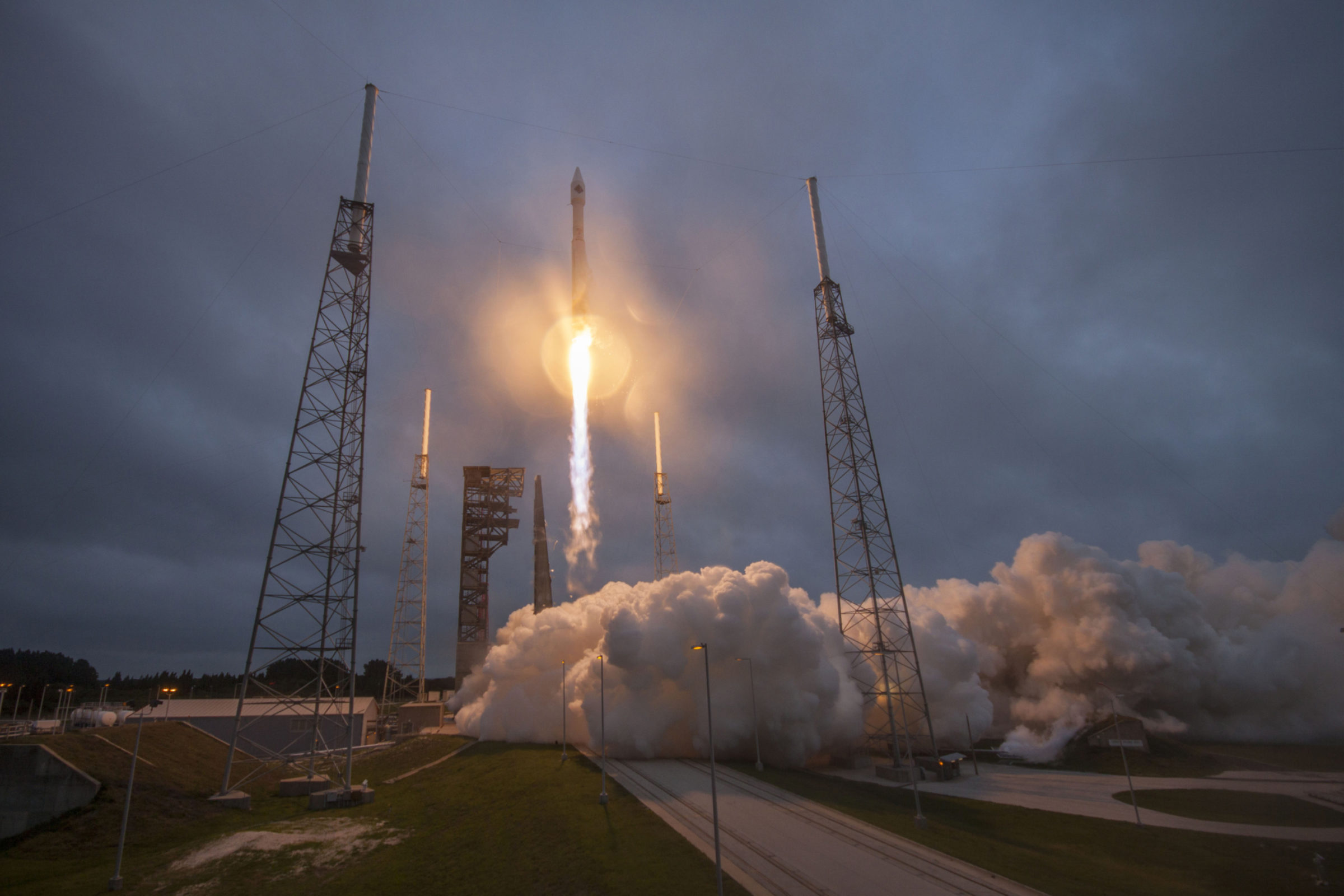Jason Davis • Dec 06, 2015
After Weather Cooperates, Atlas Rocket Launches Cygnus Cargo Craft to ISS
It took four tries for the weather to cooperate, but on Sunday afternoon, a Cygnus cargo spacecraft loaded with 3.3 metric tons of critical crew supplies launched toward the International Space Station. Riding to orbit aboard a United Launch Alliance Atlas V rocket for the very first time, Cygnus lifted off right at the start of a 30-minute window at 4:44 p.m. EST (21:44 UTC). This is the first Cygnus to reach orbit following the destruction of an Antares rocket in October 2014.

View: United Launch Alliance photo gallery
View: Kennedy Space Center photo gallery
"The countdown was exceptionally smooth, said Vern Thorp, the NASA mission manager for United Launch Alliance. "It was one of those countdowns that makes it look kind of boring."
Three consecutive launch attempts on Thursday, Friday and Saturday were called off due to high winds, clouds and precipitation at Cape Canaveral, Florida. A bleak forecast yesterday prompted controllers to scrub several hours ahead of launch time in order to give ground crews extra rest.
Today, Air Force forecasters predicted a 70 percent chance of favorable weather, and winds at launch time were within acceptable limits.
"We're done talking about the winds for the week, Thorp said. "We've been talking about winds all week, and that's enough."
Following liftoff, the Atlas quickly disappeared into cloud cover. But NASA TV viewers were treated to stunning live views courtesy of cameras aboard the rocket. A shot from the Centaur upper stage showed the sun slowly dipping toward Earth's horizon as the vehicle crossed the Atlantic Ocean into nightfall.

At the time of liftoff, the International Space Station was near Bermuda. The crew, including current station commander Scott Kelly, viewed the launch from the station's window-filled Cupola:
Caught something good on the horizon. #Cygnus at #sunset on its way to @space_station! #YearInSpace pic.twitter.com/D3EVQUhxR6
— Scott Kelly (@StationCDRKelly) December 6, 2015Cygnus separated from the Centaur upper stage and payload adapter about 21 minutes after liftoff. Orbital ATK later reported the vehicle's new UltraFlex solar arrays had been successfully deployed:
We have confirmation that both solar arrays on the S.S. Deke Slayton II have unfolded. #Cygnus pic.twitter.com/kpIYddXGYC
— Orbital ATK (@OrbitalATK) December 6, 2015Over the next three days, Cygnus will raise its orbit, arriving at the ISS on Wednesday, December 9. It will approach autonomously, stopping 10 meters beneath the station's Harmony module, Node 2—the laboratory’s forward-most junction. NASA astronaut Kjell Lindgren, assisted by Scott Kelly, will grab Cygnus with the station's robotic Canadarm. Lindgren will move Cygnus over to Unity, Node 1, for berthing at the Earth-facing port.
Cygnus will become the first cargo ship to berth at Unity. This will allow SpaceX’s Dragon—which NASA officials say is scheduled to launch no earlier than January 8—room to dock at Harmony.
"You give the crew the flexibility to have actually two cargo vehicles berthed to the station at the same time," said Frank Culbertson, president of Orbital ATK’s space systems group, during a pre-launch briefing last week.
The return of Cygnus to flight provides a much-needed logistical boost for NASA and its ISS partners. Starting with the failure of Antares in October 2014, three cargo resupply spacecraft were lost in less than a year. A Soyuz Progress vehicle spun out of control in April 2015, and a SpaceX Dragon was destroyed in June.
NASA laid out the mission's high stakes during last week's briefing. "We have, basically, toilet supplies through February of next year," said ISS program manager Kirk Shireman. "And food—we hit our warning line, if you will, February 19th, and right now our projection is we'd be out of food on April 12."
"No pressure, right?" said Culbertson. "I didn't know that toilet supplies were so low."
Today’s Cygnus flight marked United Launch Alliance’s twelfth and final launch of 2015. The company is planning for 16 launches in 2016, with 12 scheduled from Cape Canaveral. That includes another Cygnus-Atlas resupply flight scheduled for spring.
Support our core enterprises
Your support powers our mission to explore worlds, find life, and defend Earth. You make all the difference when you make a gift. Give today!
Donate

 Explore Worlds
Explore Worlds Find Life
Find Life Defend Earth
Defend Earth

